The British Museum
The British Museum which was founded in 1753, features a remarkable collection which spans over two million years of human history. Centred around the magnificent Great Court, enjoy a unique comparision of the treasures of world cultures all under one roof.
Visited by up to six million visitors per year, world famous objects such as the Rosetta Stone, Parthenon sculptures, and Egyptian mummies can be found at the British Museum. The museum’s special exhibitions, displays and events are designed to advance understanding of the collection and cultures they represent, a great addition to the vast permaned collection the museum has to offer.
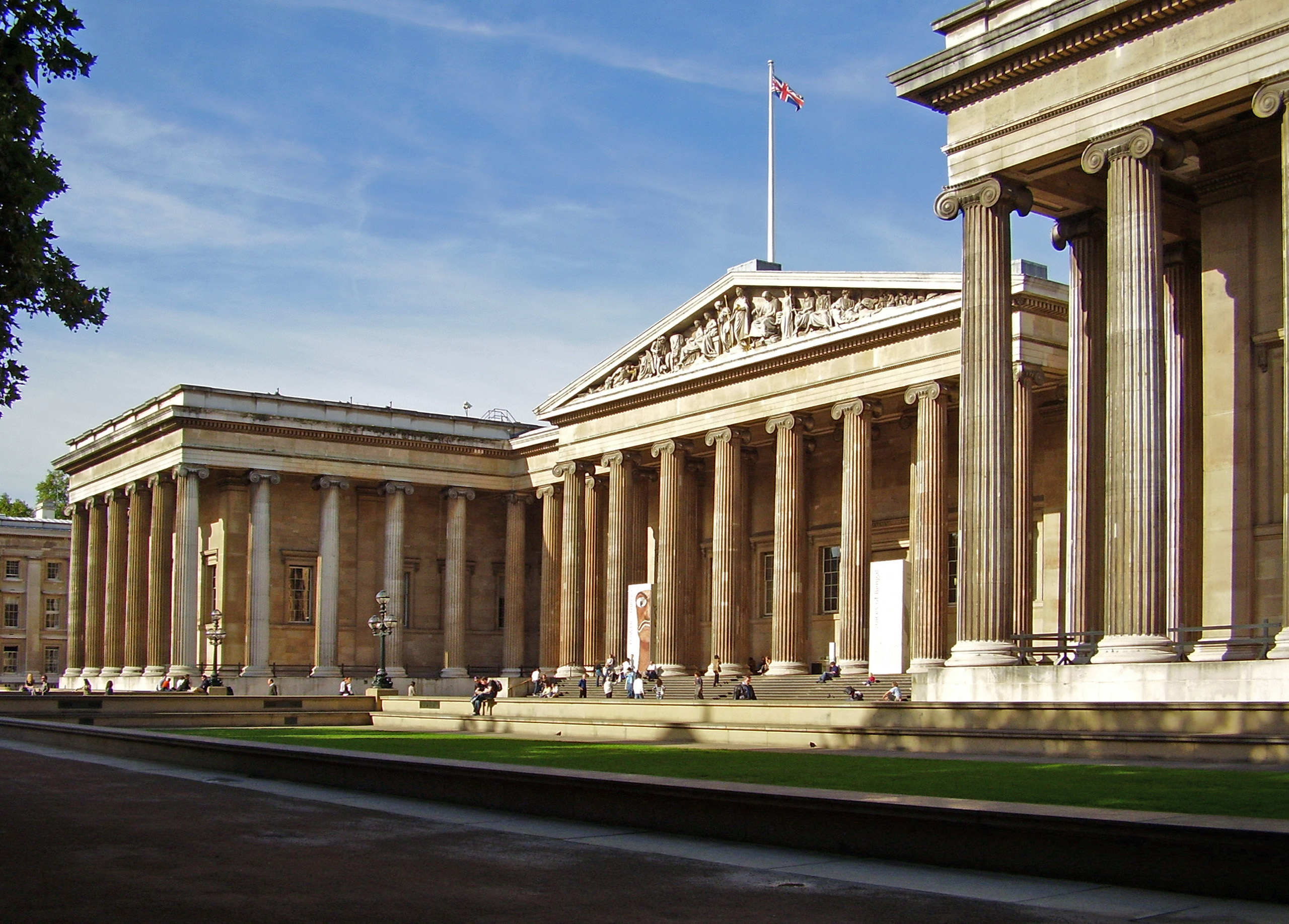
The National History Museum
In one of London’s most beautiful landmark buildings, hundreds of exciting and interactive exhibits await you at the National History Museum. The popular Dinosaurs gallery, Mammals display with the unforgettable model blue whale and the spectacular Central Hall which is home to the Museum’s iconic Diplodocus skeleton are just some of the many highlights to enjoy when you visit.
Also not to be missed is the state-of-the-art Darwin Centre Cocoon where, on a self-guided tour, you can see hundreds of fascinating specimens and look into the laboratories where scientists are at work.
The Museum also offers a wide-ranging programme of temporary exhibitions and events, including chances to join experts in the Darwin Centre’s high-tech Attenborough Studio in topical discussions about science and nature.
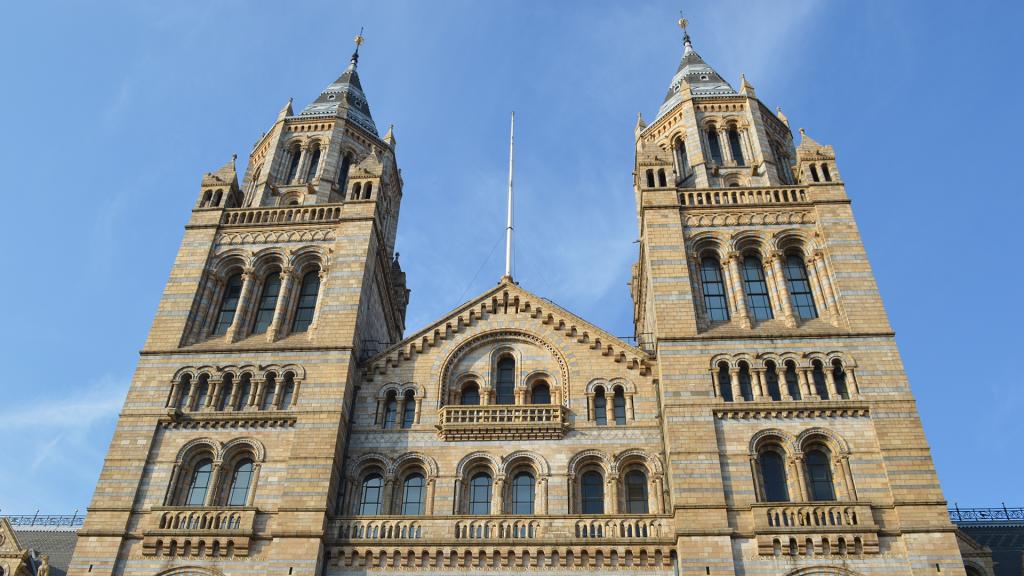
The Science Museum
The most visited science and technology museum in Europe, The Science Museum houses over 15,000 objects on display, including world-famous objects such as the Apollo 10 command capsule and Stephenson’s Rocket.
The interactive galleries on display bring to life first scientific principles and contemporary science debates. Plus, experience what it’s like to blast off into space on an Apollo space mission in our stunning 3D and 4D simulators, fly with the Red Arrows and watch a film on a screen taller than four double-decker buses in the IMAX 3D Cinema.
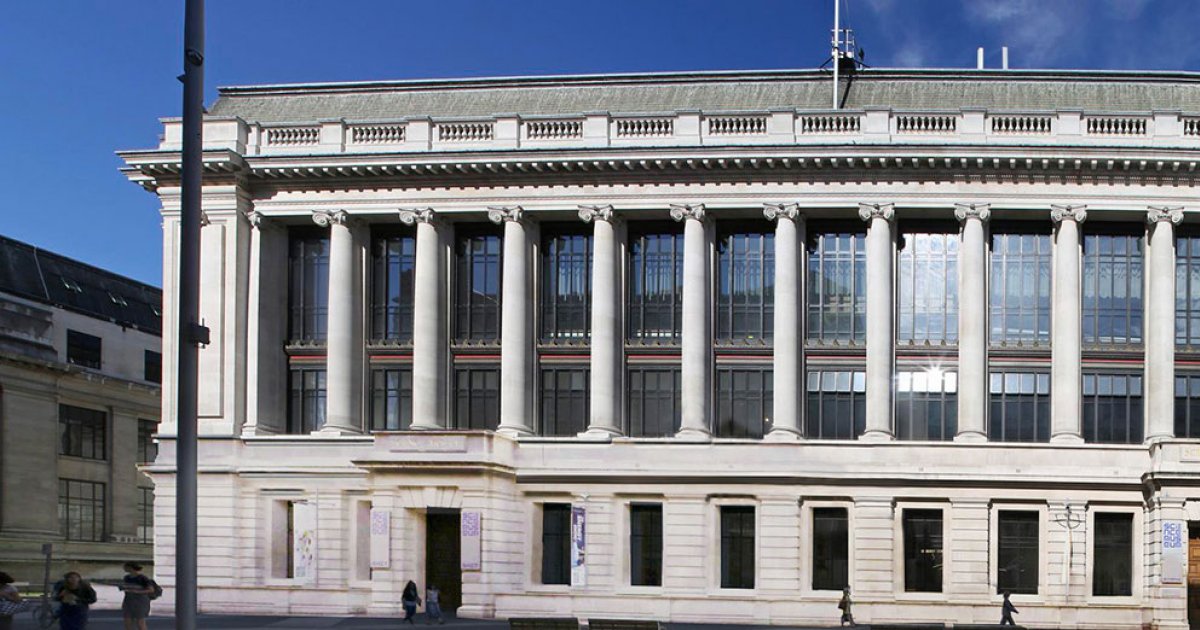
Victoria and Albert Museum
The world’s greatest museum of art and design, the Victoria and Albert Museum is the world’s greatest, representing more than 3,000 years of human creativity, with colelctions unrivalled in their scope and diversity.
The V&A has undergone a dramatic programme of renewal and restoration in recent years. Highlights to be enjoyed include the Medieval Renaissance galleries containing some of the greatest surviving treasures from the period, the breathtaking jewellery, gallery and the stunning British galleries, illustraing the history of Britain through the nation’s art and design. In addition to its outstanding free permanent collection, the V&A offers a programme of temporary exhibitions and an extensive events programme.
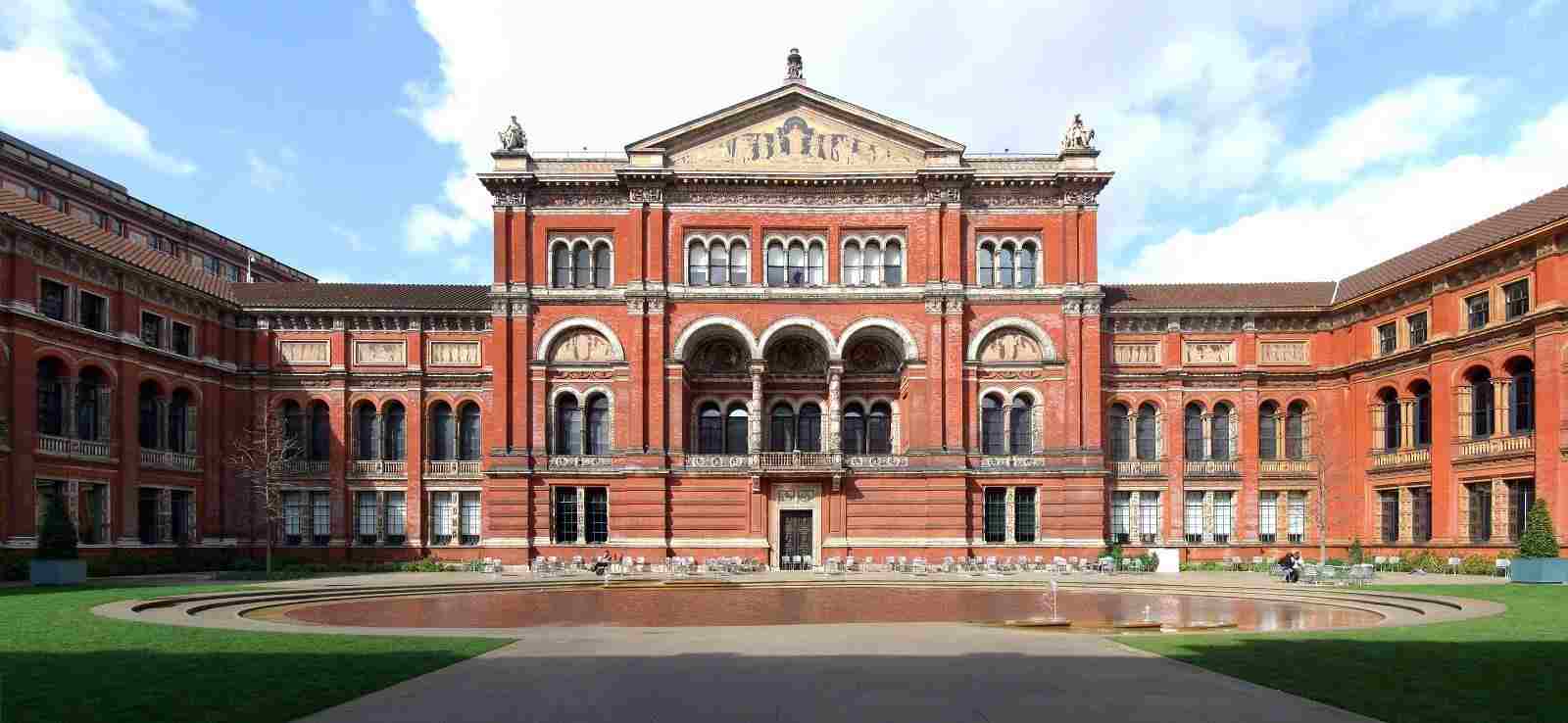
V&A Museum of Childhood
From the makers of the Victoria and Albert Museum, we bring you Bethnal Green’s V&A Museum of Childhood. With the same focus on storytelling through decor and memorabilia as its parent museum, the Museum of Childhood explores what it means to be a child today and what it has meant throughout recent history.
The Museum features different galleries that explore all parts of childhood. The timeless hits from over the year such as toy figurines, teddy bears, puppets, paper models, mechanical toys, construction toys, clothing, decoration and much more. Most notably, the Museum of Childhood holds the largest collection of dolls in the UK; the collection features well-known brands across recent history such as Barbie, Bratz and Cabbage Patch Kids along with dolls that made it big across the wider world. Place (Village) by Rachel Whiteread is a sculptural piece that features of around 150 dolls’ houses that are internally lit and is on permanent and free display at the Museum and is certainly worth a visit.
The Museum also features collections on the way that school has changed (very dramatically) over the years. Its collections feature schoolwork, reports, drawings and more educating visitors on how-lucky-they-have-it today!
Arts and crafts and playing sessions are a few of the daily activities happening at the Museum. All activities are free and at quieter times of the year it is very easy to simply drop-in on proceedings. It goes without saying that the Museum of Childhood is perfect for families (children especially); there are so many things to do in one of London’s quieter Museums.
The V&A Museum of Childhood is accessible by public transport via Cambridge Heath London Overground station (5-minute walk) and Bethnal Green Tube station served by the Central line (8-minute walk).
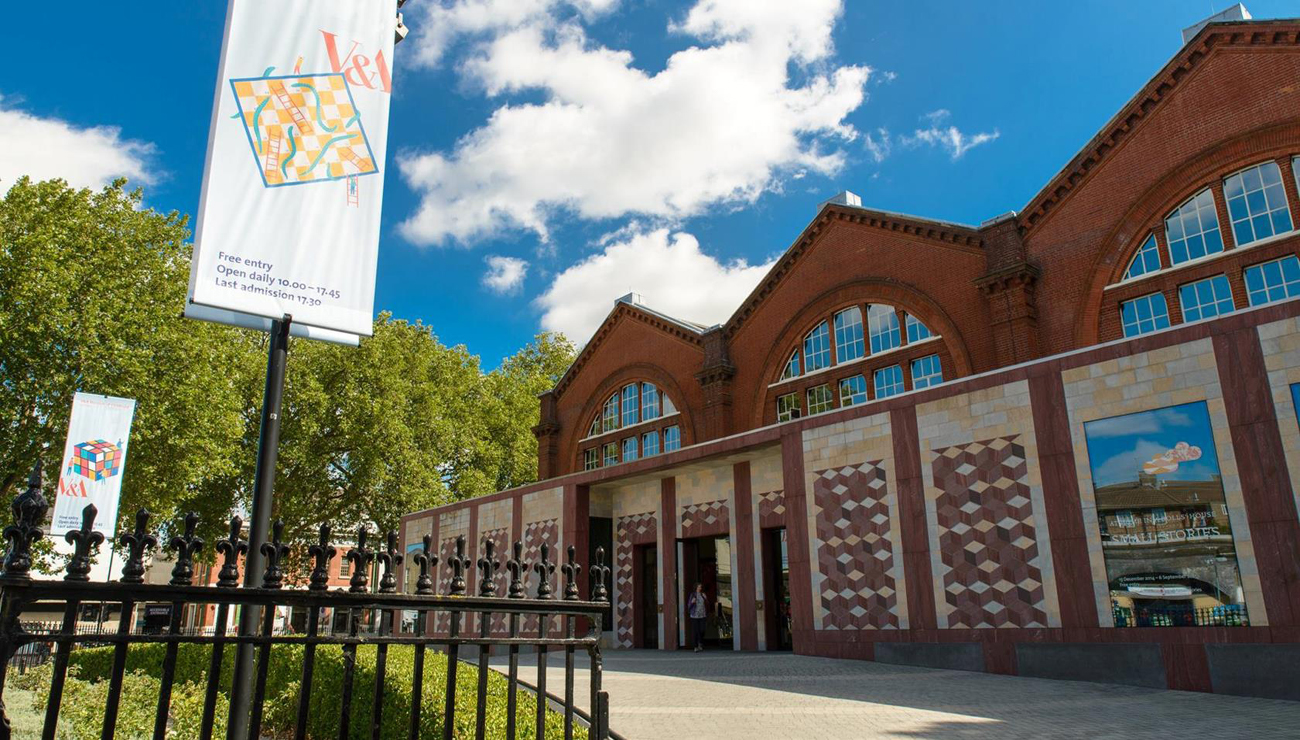
Churchill War Rooms
Located in the underground bunker in Westminster where Winston Churchill himself undertook war planning; this one-of-a-kind Museum is a great place to learn about the heart of Britain’s wartime plannings.
The Churchill Museum within the War rooms allows visitors to see Churchill’s favourite paintings as well as admire his favourite iconic cigars. The Museum gives visitors a look into who Churchill really was: his life before, and most importantly, during the Second World War and his approach that ultimately won the war.
Find out about the extraordinary life down in the bunkers where ministers of state, the prime minister and secretaries all worked alongside each other in an effort to bring the war to an end. Also navigate the winding corridors and underground streets that lead occupants then and lead visitors now to the Cabinet meeting room, the Prime Minister’s bedroom, telephone room and more.
The Churchill War Rooms are available by public transport via St James’s Park tube station served by the Circle and District lines and Westminster tube station served by by the Circle, District and Jubilee lines.

The National Gallery
The home for significant pieces of European art from the 13th Century onwards, the National Gallery, Trafalgar Square is the place for Rembrandt, Van Gogh, Michelangelo, Raphael and so many more. The gallery was founded in 1824 and today is still one of London’s top attractions with tourists from around the world flocking to see the exclusive pieces that this iconic institution has to offer.
The Museum has free admission and is open every day of the week. On public display, European art from throughout history is up on the walls along with the journey of art in Europe and the stories behind the paintings.
The Museum can be a lot to take in – especially if you are not caught up on European art – so a 60 minute tour runs from Monday to Friday at 14:00 to give visitors just a taste and a grasp on what the National Gallery is all about. The tour is intimate and is for individuals or groups of up to four people.
There are many different one-off or temporary events going on all throughout the year at the Gallery. ‘Talk and Draw’, for example, is a great way of personally engaging with art and engaging with it in a proper and considered fashion. This event is lead by an artist and a lecturer who will give a talk and allow attendees to create their own works in a relaxed and casual atmosphere. These events are generally held every Friday between 13:00 and 14:00 and attendees will be accepted on a first come, first serve basis.
Other events at the museum include talks on specific paintings, visiting orchestras and musicians, children’s play sessions, talks from curators, workshops on technique and more that allow visitors to actively engage in the legendary art on show at the Gallery.
The National Gallery allows visitors not only a glimpse of art but a chance to gain real insight into its production and story – a valuable offering for any tourist.
The National Gallery is available by public transport via Charing Cross Tube station served by the Northern line and Leicester Square Tube station served by the Northern line too.
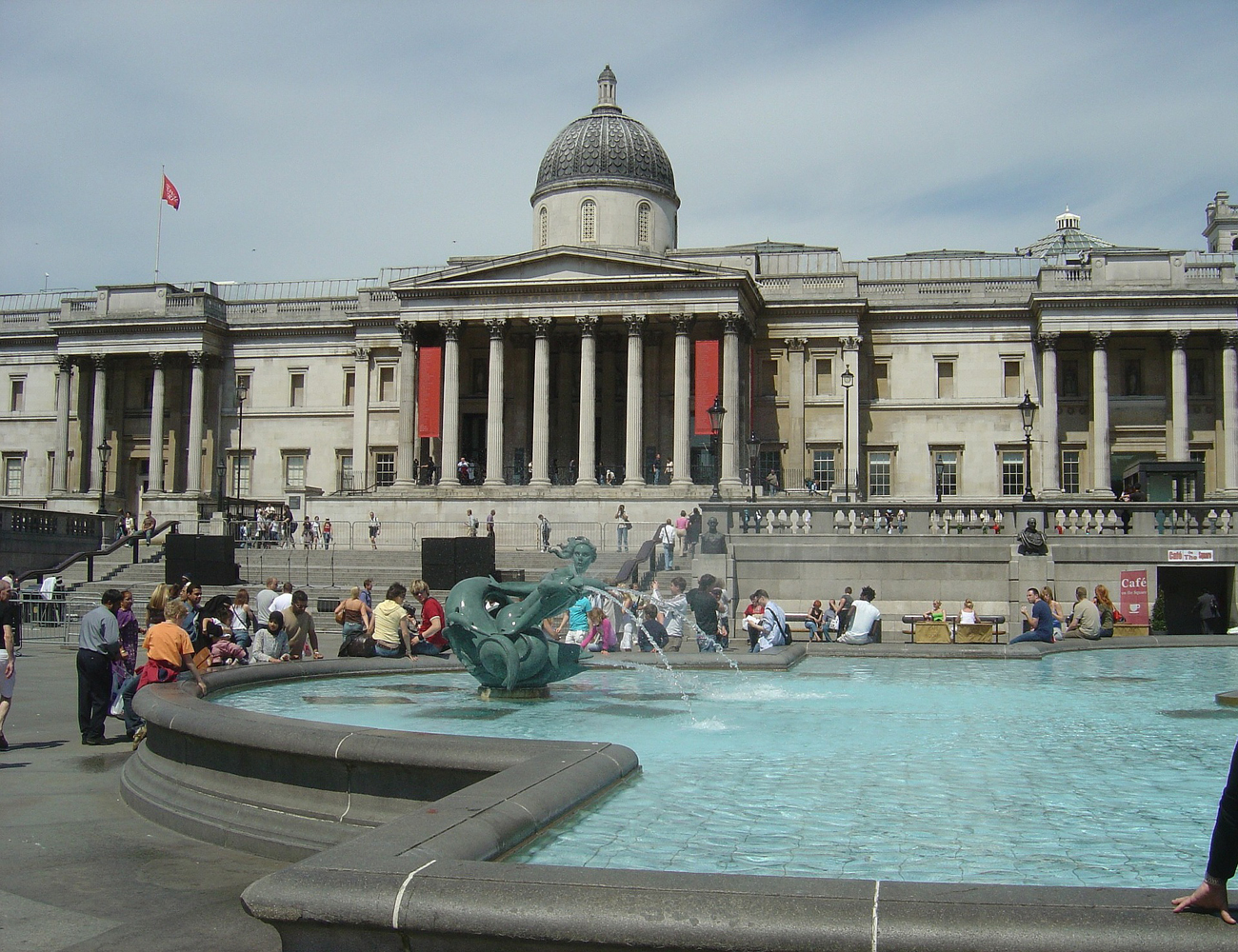
Tate Modern
Most people would argue that the Tate Modern is the best collection of modern and contemporary art in the UK. Located in the atmospheric Bankside Power Station on the South Bank, the Tate Modern allows visitors a one-stop-shop of some of the best modern art around. Impressionism, pop art, identity politics and countless other artistic ventures are presented in the mediums of paintings, photographs, sculptures (and impressive pieces at that), films, recordings and more.
The permanent installations and exhibitions at the Tate are inherently memorable and everyone who visits will have one in the back of their mind when they think of Tate again. Some of the most famous and notable permanent exhibitions include Babel, Whaam! and Pablo Picasso’s Weeping Woman.
Babel, by Cildo Meireles, is a very tall tower made solely of mass-produced, second hand analogue radios. All of these radios are turned on and tuned into different stations to create a sensory experience combining the glow of each radio and the overall cacophony of sound from the radios. The tower is given its own room and it has never been truer to say that you literally cannot miss it.
Whaam!, by Roy Lichtenstein, is one of the more famous pieces in the Gallery. The pop-art, painting spread over two canvases portrays a plane shooting down another reading “I pressed the fire control… and head of me rockets blazed throughout the sky”. This is followed of course by the “Whaam!”. The comic book, pop-art style is iconic – yet playful – and shows how fun contemporary art can be whilst still holding so much more meaning within it.
After going to the galleries, why not take a trip to the Natalie Bell Building where you can explore the creative process of artists laid bare. The area also features the way that individuals view and engage with art, depictions of artists’ studios and interpretation and perception.
To gain a deeper understanding of the significance of different exhibitions in the Gallery, why not join one of the many free guided tours? These tours focus on specific exhibitions so you can choose whichever takes your fancy – good right? Check the Tate Modern website for more details on these tours and their timings.
For the best modern art collection in the UK and, arguably, some of the best in the world, the Tate Modern is an undeniably valuable and valued art gallery. Highly commended and highly recommended.
The Tate Modern is accessible by public transport via Southwark Tube station served by the Jubilee line (9-minutes walk) and Blackfriars Tube station served by the Circle and District lines and National Rail services (10-minutes walk).
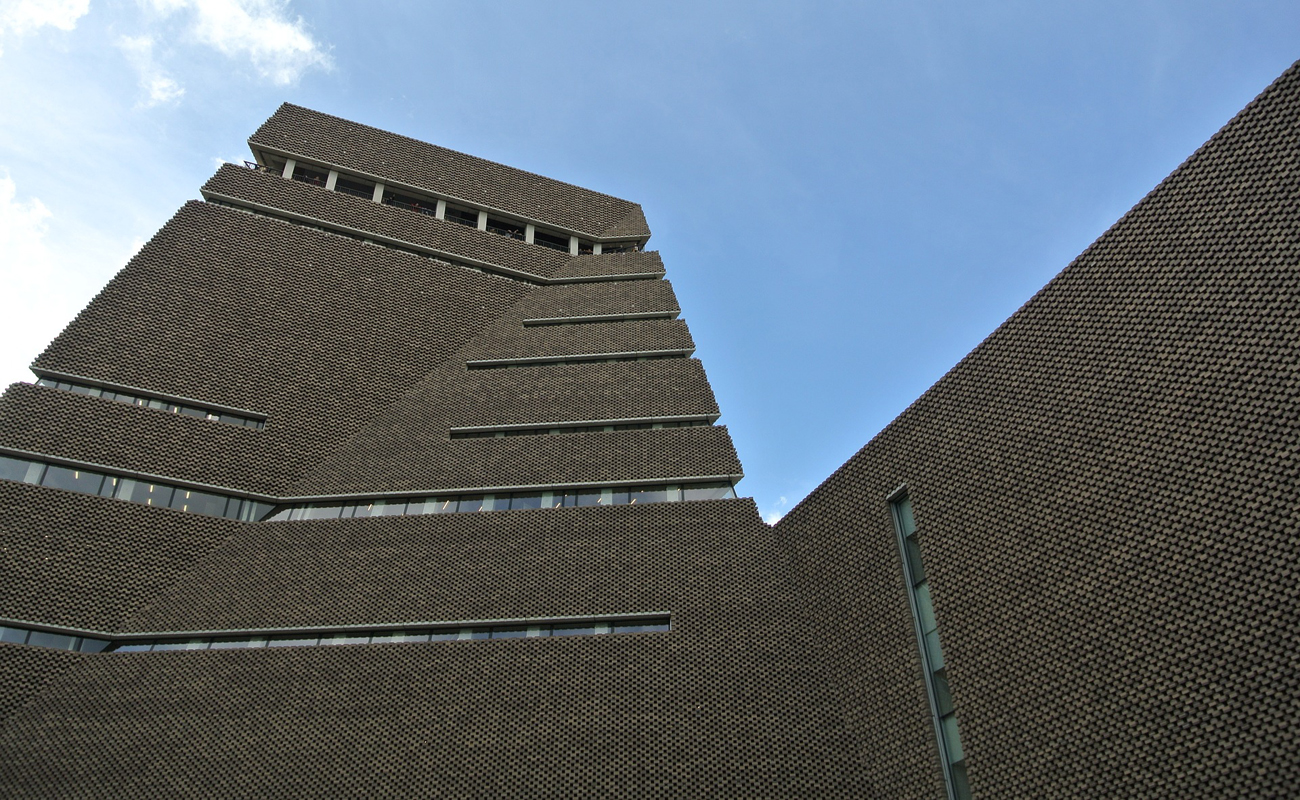
Tate Britain
For British art from the 1500s onwards, you cannot go wrong with taking a trip to the Tate Britain in Pimlico, Westminster. Often noted for its extensive and unrivaled collection of J.M.W. Turner’s work, the Tate Britain’s record of British art is too a force to be reckoned with.
The “Walk through British art” is the main feature of the Gallery where visitors are guided through a series of rooms that feature British art in a chronological order from the 1500s onwards. Each display is arranged by decade and information on the evolution of British art in each decade is readily available in that room or from a tour guide.
The Gallery also features different collections and galleries, most notably their collection of J.M.W. Turner which is the largest collection of his work in the world. This is significant as Turner’s work is widely considered the advent of modern art. The gallery also features two rooms as part of an exhibition all about the influential artist, Henry Moore, that feature not just some of his work but also details the process of how he went about creating his sculptures.
The Spotlights section of the gallery is an ever changing area that places a focus on the life and work of a specific artist. Check on the website prior to your visit to find out who the current artist on exhibition in the Spotlight is.
The Tate Britain is not just an art gallery but an experience too. Events such as the ‘Late at Tate Britain’ allow members of the public discreet access to the galleries after hours. This provides visitors with a unique experience where they can, at their own leisure, admire and converse over certain paintings, artists and periods over a good drink. This happens on the first Friday of each month and if you are visiting at around this time, this is well-regarded and a very pleasant way to spend your evening.
Providing visitors with a masterfully and well-curated collection of British art and in-depth profiles of different artists creating a unique visit every time, you really cannot go wrong with the Tate Britain.
The Tate Britain is accessible by public transport via Pimlico Tube station served by the Victoria line.

London Transport Museum
Get onboard with the Tube-mania and ferry yourselves down to the bustling junction of transport heaven that is the London Transport Museum, Covent Garden. London is the home of the world’s first ever Underground Subway, the London Underground (more commonly referred to as the Tube), and this Museum takes you into its unique journey from its first opening in 1863 all the way up to the present day.
The London Transport Museum allows visitors an unrivaled insight into the way that transport has revolutionised London in such a short space of time. Learn about the challenges that tunnellers faced when they first built the Underground and the challenges that they still face today. A well regarded attraction at the Museum explores the relationship that London’s transport system has had with signage, decor, graphic design and modern art. Many recognisable signs, posters and more are on display and many replicas, and some originals, are on sale in the shop (that we will cover in a moment).
There are different temporary displays on exhibition at the Museum; some of which are to do with current transport programmes. For example, the East to West Crossrail Railway is being built at the time of writing and there are different temporary exhibitions looking behind the scenes at the construction of this line. There is also a “Poster Parade” which celebrates London’s historically iconic transport posters.
The London Transport Museum Shop features enough memorabilia to fill a shop – so they did. The shop features nearly everything you could ask for from this museum: limited edition vintage posters, original light-boxes from the platforms, decommissioned Tube signs, toys, books, homewear, moquette designed furniture and so much more. You can also visit the shop online if you are worried that you won’t be able to fit it all in your suitcase!
You don’t need to be a transport fanatic to love this museum, just pop along and get in the know on one of London’s great treasures.
The London Transport Museum is accessible by public transport via Covent Garden Tube station served by the Piccadilly line.
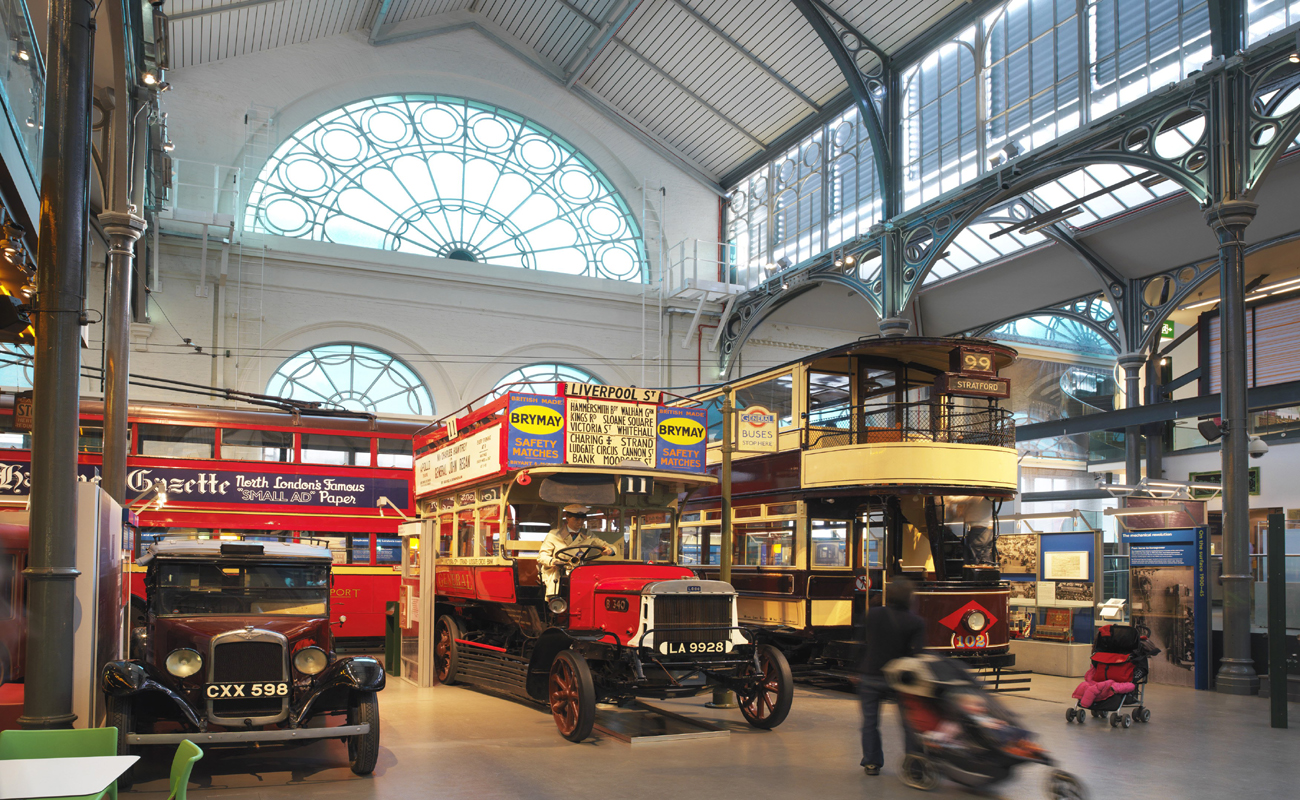
National Maritime Museum
The National Maritime Museum is a great museum for families and those with a vested interest in British maritime history. Based in Greenwich, this National Museum is free of charge to enter and features many fascinating galleries all about seafaring!
During your visit at the Museum, you will navigate the facets of nautical life over the years including piracy, extreme conditions when sailing and the events that led to Britain becoming one of the most prominent international maritime icons. Four new ‘immersive galleries’ have been installed in the Museum which feature over 1000 new objects, interactive displays and exhibitions. The galleries feature opportunities to listen to the stories from those who were aboard ships like the one lead by Captain James Cook in 1768. They also feature the artistic representations of naval exploration and the exhibitions that helped Britain explore new territory.
The Museum also has a focus on indigenous life which is intrinsically connected to the historical British explorations. The British empire’s exploration and occupation of new territories was very often immensely damaging to indigenous life; indigenous people were often disregarded and their land taken from them and redeveloped. These wounds are still not fully healed today and the exhibition explores the fractious relationship between Britain and what it considered its colonies.
Bringing the kids along? The National Maritime Museum features the AHOY! Gallery which is a fun and enticing gallery for children aged 0-7. The Gallery allows children chance to play whilst learning about polar exploration, life as a trading merchant selling goods and piracy. It is a great chance for children to let off a bit of steam whilst really engaging with the Museum! Tickets are required during weekend and holiday visits and can be purchased through the National Maritime Museum website.
The National Maritime Museum is also a short walk from the Cutty Sark located on the Thames. The Cutty Sark clipper is a up-close and entertaining look at Britain’s tea trade that is tailored towards families; for more information on the Cutty Sark visit the ‘Culture’ article on this website.
The National Maritime Museum offers visitors an informed and entertaining insight into Britain’s maritime history – and a great day out if nothing else.
The National Maritime Museum is accessible by public transport via Cutty Sark for Maritime Greenwich DLR station (7-minute walk), Greenwich DLR station served by the DLR and National Rail services (11-minute walk) and Maze Hill National Rail station (9-minute walk).

SCAN-A
HMS Belfast
A 25-minute Thames Clipper trip up the river from the Museum will bring visitors to the celebrated icon of WWII, HMS Belfast. Climb aboard and learn about this decommissioned wartime ship. Located near London Bridge, the HMS Belfast was saved from scrappage and since that moment has been kept in a good condition and has been paraded as a symbol of the power that Britain used to win the war.
There are 9 decks in total aboard the ship and you are able to get amongst all the technology throughout. There are simulations and interactive experiences to learn about the role of HMS Belfast, the part it played in the war and how you could work with the boat at war. You can also listen to the many tales from previous crew members aboard the ship to get a true-to-life insight into what life aboard HMS Belfast and many warships was really like.
Aside from the history, HMS Belfast is a must for any visitors looking to join the Royal Navy. This experience provides unfiltered accounts of what life is like on a warship and you can speak to members of staff about enlisting in the Royal Navy.
Pairing HMS Belfast with the National Maritime Museum is a great way to get clued up on Britain’s maritime history new and old. An experience that will not disappoint.
HMS Belfast is accessible by public transport via London Bridge City Pier served by Thames Clippers, London Bridge Tube station served by the Jubilee and Northern lines (7-minute walk) and Monument Tube station served by the Circle and District lines (14-minute walk).

Imperial War Museum
Built upon the former Bethlem Royal Hospital, the Imperial War Museum is your go to museum for the most interesting memorabilia, accounts, displays and more on the First and Second World Wars. Even before you walk into the building, located in Lambeth, South London, you are faced with two very imposing 15-inch naval guns that were taken from HMS Ramillies and HMS Resolution.
Once you are inside and out of the line of fire, you can take a look around the displays. One of the most popular displays is called ‘Turning Points: 1934-1945’. This exhibition puts the physical possessions and paraphernalia of those people involved in key moments during the Second World War on display. A Japanese fighter plane that was severely damaged in war and a trunk suitcase owned by a family escaping genocide in Auschwitz are two of the most poignant parts of this exhibition. Learning about war is different when the evidence is right in front of you.
The Imperial War Museum also features pieces on the effects that war had around the wider UK, stories from spies and refugees, accounts from those hiding in bomb shelters and the art that was created during that period. The Museum also focuses on how peace and security is thriving post-WWII and the ways that we have sought peace in the years following one of our greatest ever tragedies.
This and so much more is on offer for visitors to IWM London. The Museum is not harrowing, yet is unfiltered and manages to strike a balance between education and suitability. Even though the subject matter may sound unbecoming for families, the IWM creates a positive and optimistic approach to its teaching and its displays are nothing less than fascinating.
Imperial War Museum London is accessible by public transport via Lambeth North Tube station served by the Bakerloo line (7-minute walk) and Elephant & Castle Tube station served by the Bakerloo and Northern lines (10-minute walk).
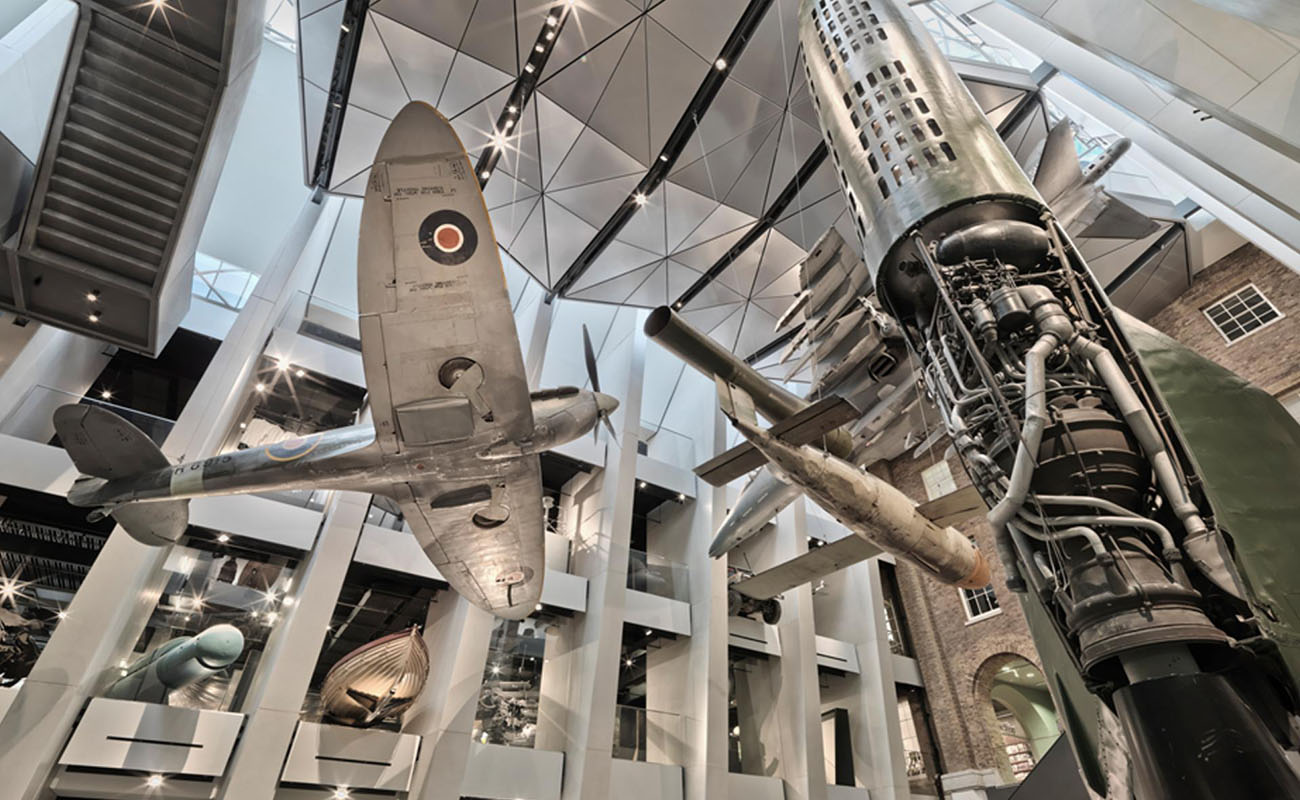
Bank of England Museum
Located in the heart of the Bank of England in the City of London, the Bank of England provides visitors with a way of understanding how money in the UK has become what it is today. Entry is free and this Museum is not as big as many others but should not be overlooked.
Visitors may get the chance to learn about the Bank of England’s gold store – one of the largest in the world – and also feel the weight by picking up a real gold bar. The gold store is key to the Museum’s objective of informing visitors on how the Bank of England has secured the financial system over the many hundreds of years since its inception. The Bank of England has, of course, evolved over the years and you can learn about its role today in keeping the big books balanced.
The Museum generally has temporary exhibitions on, for example: sketching and drawing activities in the style of Topolski led by workshop assistants, the financing of wars and the construction of the Bank of England. Fascinating events, activities and experiences like these are happening throughout the year at the Museum and you should check the website to see what is happening during your visit.
For a great insight into one of the UK’s most important and timeless institutions, the Bank of England Museum is an unrivalled choice.
The Bank of England Museum is accessible by public transport via Bank Tube station served by the Central, Northern, Waterloo & City lines and the DLR.

Museum of London
For the lowdown on all things London, the Museum of London is your one-stop Museum for the history of one of the world’s greatest cities (that may sound biased but it is objectively true). The Museum of London which is currently in-between homes in the Barbican and its new nearby site in Smithfield is still open to the public and has, as ever, free entry to the public.
The Museum has comprehensively catalogued London’s history from the prehistoric era all the way up to the present day. Starting with their first exhibition, ‘London before London’, visitors can get to know about the area of London and what would become Middlesex and then Greater London. For example, learn about the Mammoths that once roamed what is now Ilford and see a jaw from one of the skeletons of these legendary mammals. This exhibition also features precious objects, mace heads, bones, swords and other objects that played part in day-to-day life in prehistoric London.
The “Roman London” exhibition gives visitors a look into the civilisation who gave London (then Londinium) its place as an international city. From this gallery, you can see the remains of the Roman wall of London, view the 43 Roman golden coins discovered in 2000 and learn about how the Romans built the first ever bridge across the Thames River.
As we skip forward a few exhibitions (and quite a few hundred years), the “War, Plague & Fire” details the most tumultuous part of London’s history. The exhibition concerning the 1550s to the 1660s explores The Great Plague of 1665, an artistic depiction of the Great Fire of London, a plaster cast of the ill-fated Oliver Cromwell and so much more.
Moving into the role that London has played in more recent history, the “People’s City Gallery”, explores how the population boom during the 19th and 20th-Centuries made London the most influential city in the world. A hot contender for the most exciting exhibition in the Museum, this exhibition also explores both World Wars and the extreme loses and gains that London experienced over that period.
And as we move into the current day the “World City” exhibition explores London from the 1950s onwards, the London you know today. This exhibition explores the diversity and variety of character that London has and the way that modern industries have given way to a more industrious and prosperous city.
The Museum also features temporary exhibitions that are ever-changing. Themes like slavery and older depictions of the UK’s capital are a taste of the type of exhibitions happening during your visit – check their website for current events during your visit.
At the end of your visit, why not splash a bit of that tourist cash in the Museum of London Shop? Memorabilia, homeware, illustrated histories and so much more relating to specific exhibitions or London as a whole are available at their on-site shop. Check their website for new arrivals to the shop before you go.
The Museum of London is a fantastic museum for the Anglophile or for those who are interested in the complexities of our capital’s history. The Museum is suitable for families too and is a great way to spend half a day.
The Museum of London is available by public transport via Barbican Tube station served by the Circle, Hammersmith & City and Metropolitan lines (5-minute walk) and St Paul’s Tube station served by the Central line (5-minute walk).
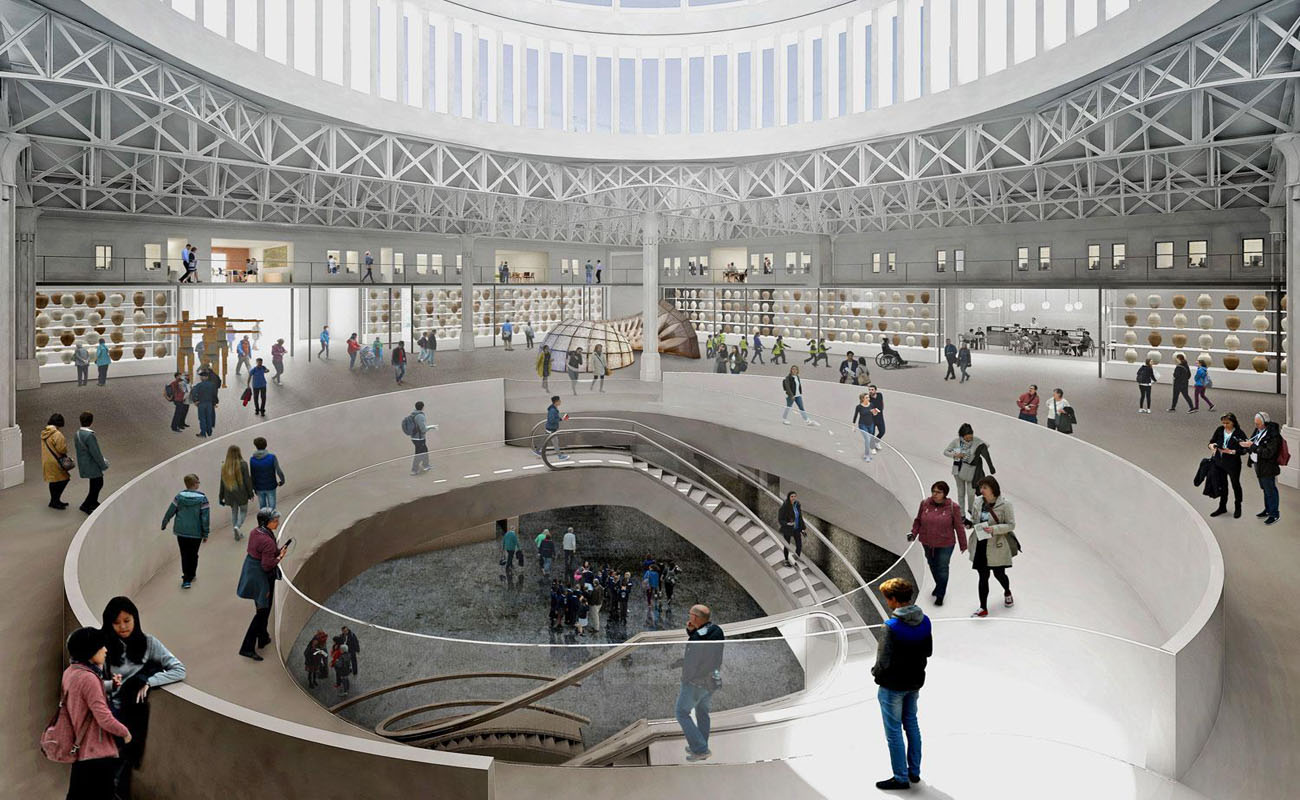
British Library
Are you a bookworm or simply want to get know one of Britain’s most treasured literary institutions? Well the British Library is for you. The UK’s national library is home to over 170 million items including literary pieces from throughout British history and further afield too. The Library is not set up as a traditional Museum and is a place for research and academia primarily. However, the tours, events and exhibitions throughout the year tell another story!
Events going on throughout the year include radio recordings, talks, hands-on workshops and so much more. These are most often ticketed events so you should check the website before your visit to see what is necessary to attend. Tours are happening all the time that take visitors around this very impressive institution. Building tours are the probably best for tourists but other, more specific tours like the ‘Treasures Tour’ that teach visitors about the Magna Carta and other famous historical publications take place. Another interesting tour is the ‘Conservation studio tour’ which takes visitors on a journey of conservation and talks them through the process of how the British Library conserve different artefacts.
The British Library also features its very own shop that has homeware, books, fashion and beauty and prints among more on offer. The British Library is located right in the centre of London in St Pancras and is a wonderful little trip to one of Britain’s most interesting institutions.
The British Library is accessible by public transport via Kings Cross St Pancras Tube station which is served by the Circle, Hammersmith & City, Metropolitan, Northern, Piccadilly and Victoria lines and National Rail services.
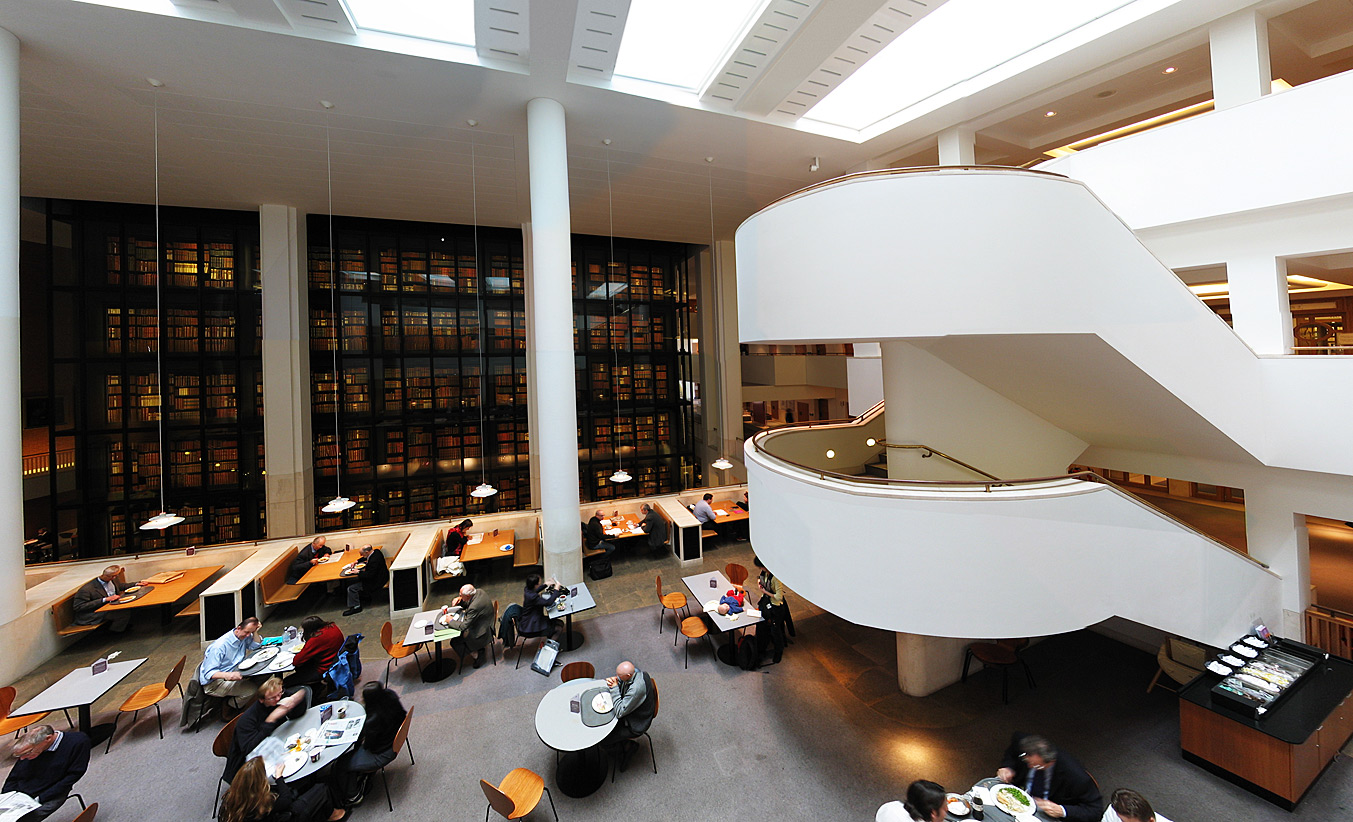
The Wellcome Collection
The Wellcome Collection is a museum focused around the intimate and inherent connections between art, science and medicine. The Museum is based upon the life and habits of Sir Henry Wellcome a successful British pharmaceutical entrepreneur who travelled the world and had a habit of bringing a lot of, what appeared to be, random objects home. The Museum has a few permanent galleries and ever-changing temporary galleries and exhibitions.
The ‘Medicine Man’ is a gallery that expresses Wellcome’s desire to bring together paraphernalia from all over the world. The Collection have curated objects to do with birth, health, sex and death from all over the world over many different civilisations. The nature of this gallery is difficult to pin down, but the underlying idea is that you can find art and meaning among everyday objects. In the gallery, the Collection claim they have Napoleon’s toothbrush and Charles Darwin’s walking stick along with other famous people’s possessions.
The Museum would normally have a second permanent exhibition but as of April 2019 (the time of writing) ‘Medicine Now’ has closed. There will be a new permanent exhibition in September 2019 and visitors should check the website for more information.
As previously mentioned, the Wellcome Collection is host many temporary galleries and exhibitions. These are mostly related to life, consciousness and psychology, chemistry and the science of the world around us. For example, Jo Spence and Oreet Ashery have created a temporary exhibition at the Museum about representations of chronic illness through their photographic work. Another very interesting exhibition is called ‘Smoke and Mirrors: The Psychology of Magic’ which teaches visitors about the way our perceptions are formed and debates over whether and how our senses can be altered. For the specific galleries open during your stay, visit The Wellcome Collection’s website.
The Wellcome Collection brings art and science together in a way you will not find anywhere else – a thoroughly interesting and unique experience.
The Wellcome Collection is accessible by public transport via Euston Square Tube station served by the Circle, Hammersmith & City and Metropolitan lines and National Rail services and Euston Tube station served by the Northern and Victoria lines and National Rail services (both stations are close to the museum and have similar walking distances).

The Royal Air Force Museum
Located slightly further out of town in (quieter) suburban Colindale, the RAF Museum is one of only a few museums in the country that is dedicated to the legacy of the Royal Air Force. Visitors can walk through the Museum where you can learn about stories from servicemen and women about their time serving in the RAF.
One thing you will notice in the Museum is the number of planes that are dotted about the museum. Walking beneath these planes gives a depth to the stories told within these walls and a real understanding of the significance of operating this type of machinery. However, this is not the closest you will get. The simulator at the Museum provides an immersive experience that puts participants in the pilots’ seat and enables them to soak up the atmosphere of wartime flying. This Museum is all about participation and experience so, during your visit, you may also try on an RAF uniform, visit the interactive exhibition on the science of jet engines and test your own reaction skills and see if you have what it takes to to undertake a stressful role within the Air Force.
The Museum puts a real emphasis upon getting involved in the history. Alongside its traditional displays, the interactive displays at the RAF Museum allow visitors to roleplay with different jobs. For example you may become an intelligence analyst probing and scouring data and information for that key detail or roleplay scenarios where you protect your operations from cyber-hackers who are trying to gain access to precious information. As well as this visitors have the opportunity to pick a mission of their choosing and design their own aircrafts which they can then test on screen.
Aside from their interactive exhibitions, this Museum provides a comprehensive and fascinating insight into what formed part of Britain’s backbone during the 20th-Century wars. This Museum is perfect for those who are considering joining the RAF and can find out more about life in the Air Force and can ask questions about it in the Museum.
The Royal Air Force Museum also features its very own shop featuring exclusive watches and jewellery, gift ideas, personalised products, exclusive prints and more. This shop is perfect for any aviation fanatic and will not disappoint.
For the best information, interactive experiences and history of the legacy of the RAF, the Royal Air Force Museum London is the place to be.
The RAF Museum is accessible by public transport via Colindale Tube station served by the Northern line (12-minute walk).

Design Museum
Learn about the intrinsic link between great design and the everyday function of our lives at the Design Museum, Kensington High Street. The Museum explores innovation and craftsmanship and the stories behind the designs that have shaped modern life. The Museum features many different types of exhibitions and events that will change overtime and it is worth checking the website before visiting to see what’s on during your visit.
They are host to one permanent exhibition titled ‘Designer Maker User’ which allows visitors an introduction to the type of collections that the Museum keeps. This exhibition looks at modern design and development through the perspectives of designers, manufacturers and users. The exhibition features nearly 1000 objects; these objects are of different disciplines and the exhibition looks at nearly every aspect of life and its relationship to great design. Take a look at road signs, Tube maps, bicycles, typewriters, shoes, gaming controllers and more and gain a real insight into what these things meant, and still mean today, for the designers and users. For a great introduction into what the Design Museum specialise in, the Designer Maker User exhibition is a fascinating and self-aware snapshot of today’s world of design.
To get an idea of what the Museum’s temporary exhibitions are like, consider ‘Stanley Kubrick: The Exhibition’ a well renowned insight into one of the most influential filmmakers of our time. The Exhibition runs until 15th September 2019 and features around 700 objects which tell the stories of Kubrick’s creations. You can learn about how he went about creating such classics as Full Metal Jacket, 2001: A Space Odyssey, A Clockwork Orange and more. Exhibitions like this, which have been given glowing reviews from newspapers across the country, are often ticketed and it is best to order these online to avoid disappointment. There are always new and exciting exhibitions on, free and paid, that are sure to peak the interest of any design-conscious visitor.
As well as exclusive exhibitions, the Design Museum is also home to a great many talks and events throughout the year. The events happening may include drawing practice, creating your own unique designs, tours of exhibitions and more. For an up-to-date account of the temporary events and displays, visit the Design Museum website [designmuseum.org].
This Museum is unparalleled in its breadth, appreciation and awareness of contemporary design and craftsmanship. You will be surely fascinated with the stories behind the material life we live, how they came about, how they have changed and how they may evolve in the future. And to suit our ever-changing world, the Museum changes too; check their website to take advantage of their unique and exclusive galleries and you’ll never know what you could discover.
The Design Museum is accessible by public transport via High Street Kensington Tube station served by the Circle and District lines (8-minute walk) and Kensington (Olympia) Tube station served by the District line, London Overground and National Rail services (11-minute walk).
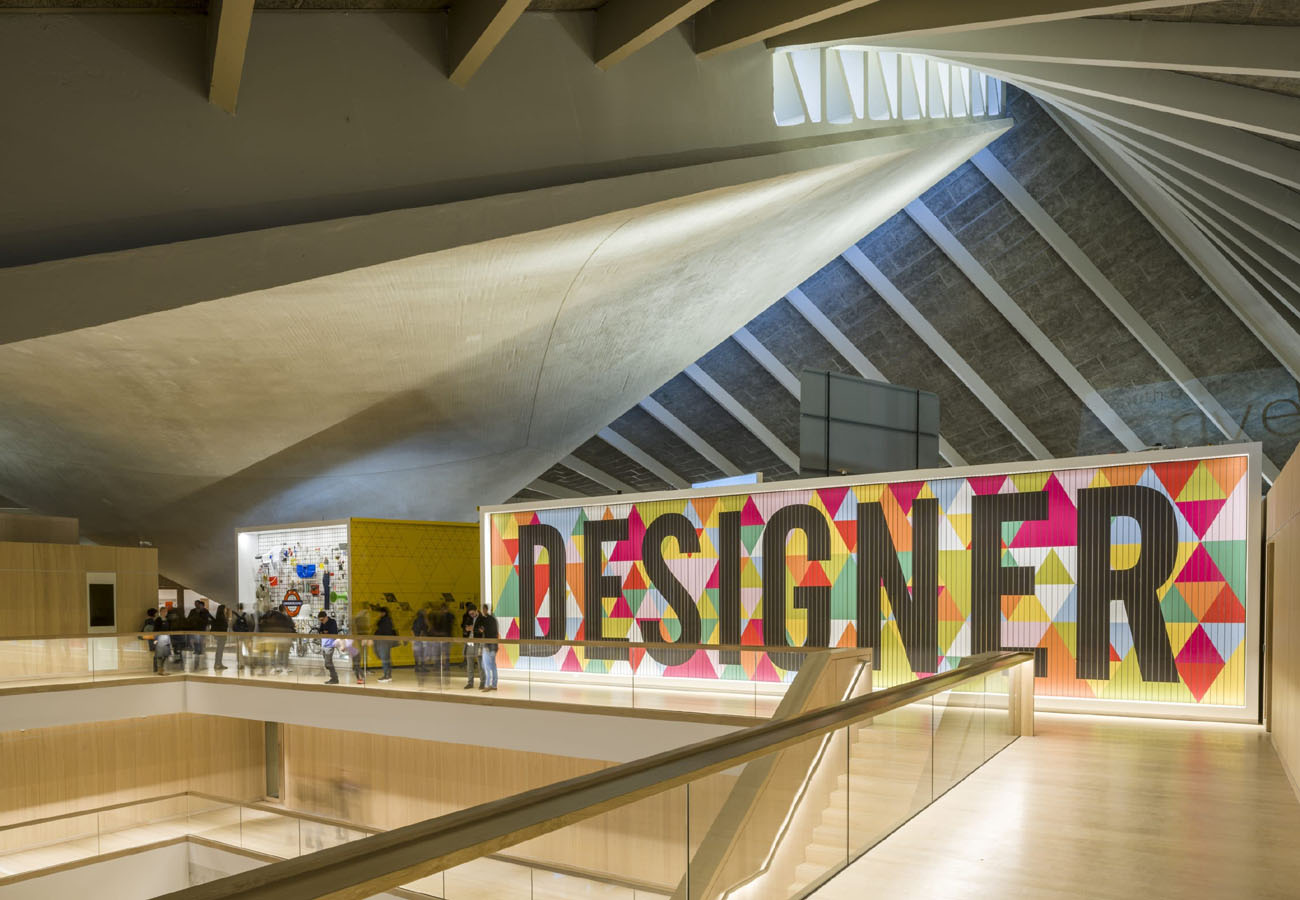
What’s On London Museum editorial Content supplied by our City Features Journalist – Ben Moran
